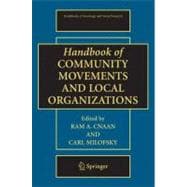
| Introduction: Creating a Frame for Understanding Local Organizations | p. 1 |
| Contemporary Conceptions of Community | p. 20 |
| Symbolism, Tradition, Ritual, and the Deep Structure of Communities | p. 34 |
| Small Towns and Mass Society | p. 60 |
| Small Nonprofits and Civil Society: Civic Engagement and Social Capital | p. 74 |
| Community Elites and Power Structure | p. 89 |
| The Political-Economic Gradient and the Organization of Urban Space | p. 102 |
| Public and Private Space in Urban Areas: House, Neighborhood, and City | p. 118 |
| The Development of Community Information Systems to Support Neighborhood Change | p. 129 |
| Describing the Community in Thorough Detail | p. 146 |
| Communities as "Big Small Groups": Culture and Social Capital | p. 163 |
| Sense of Community and Community Building | p. 179 |
| Friendship and Community Organization | p. 193 |
| Self-Help Groups as Participatory Action | p. 211 |
| Online Communities | p. 227 |
| Alternative or Intentional? Towards a Definition of "Unusual" Communities | p. 243 |
| Frayed Community: The Gated Community Movement | p. 257 |
| Congregations and Communities | p. 267 |
| Ethnicity and Race as Resource Mobilization in American Community Civic Life and Participation: Traditional and Emerging Concerns | p. 281 |
| Sustaining Racially, Ethnically, and Economically Diverse Communities | p. 295 |
| Community Responses to Disaster: Northern Ireland 1969 as a Case Study | p. 311 |
| The Nature of Community Organizing: Social Capital and Community Leadership | p. 329 |
| Avoid, Talk, or Fight: Alternative Cultural Strategies in the Battle Against Oligarchy in Collectivist-Democratic Organizations | p. 346 |
| Grassroots Social Movements and the Shaping of History | p. 362 |
| Action Research: Professional Researchers in the Community | p. 378 |
| Leadership Styles and Leadership Change in Human and Community Service Organizations | p. 395 |
| Including and Excluding Volunteers: Challenges of Managing Groups That Depend on Donated Talent | p. 410 |
| Index | p. 427 |
| Table of Contents provided by Ingram. All Rights Reserved. |
The New copy of this book will include any supplemental materials advertised. Please check the title of the book to determine if it should include any access cards, study guides, lab manuals, CDs, etc.
The Used, Rental and eBook copies of this book are not guaranteed to include any supplemental materials. Typically, only the book itself is included. This is true even if the title states it includes any access cards, study guides, lab manuals, CDs, etc.